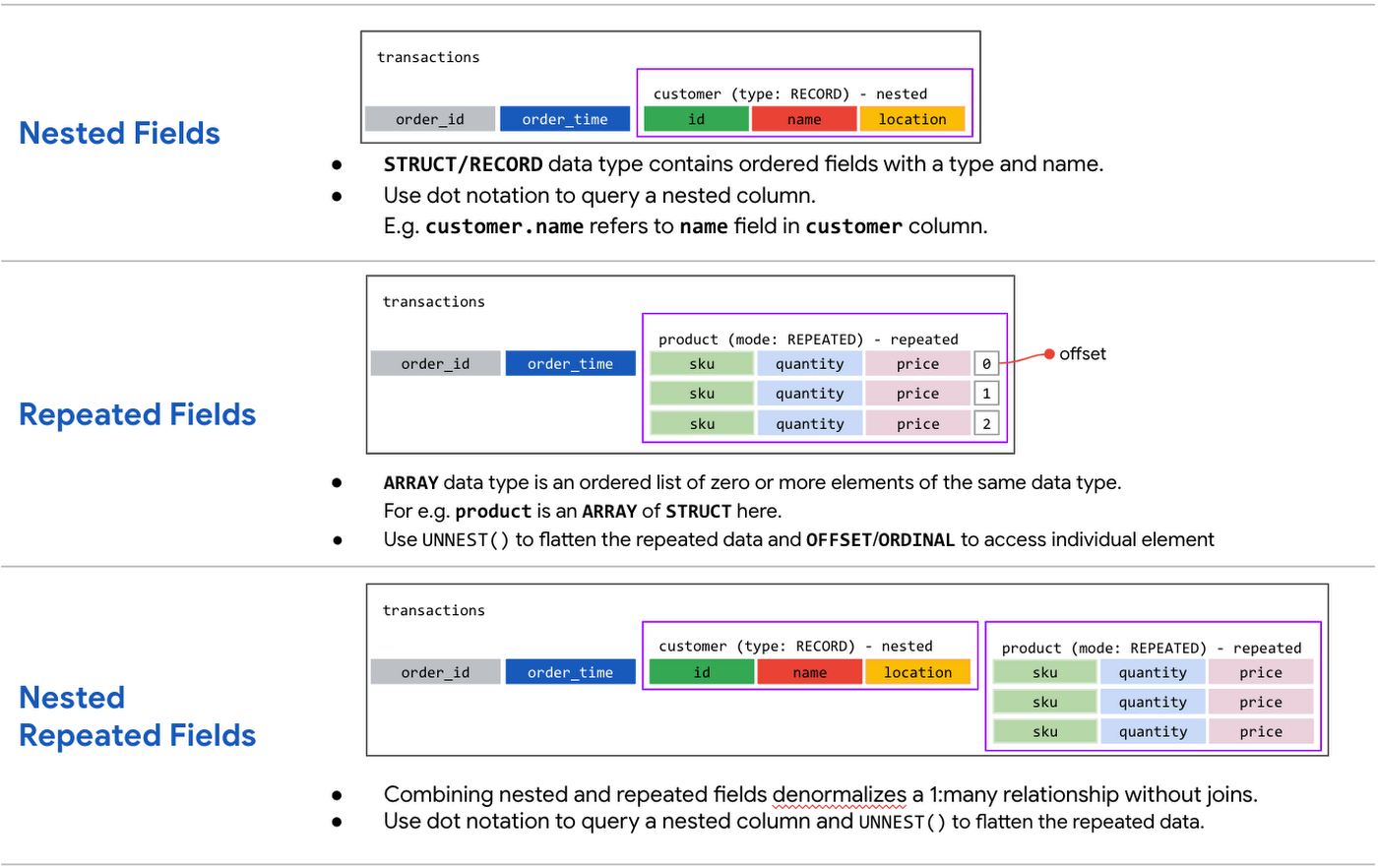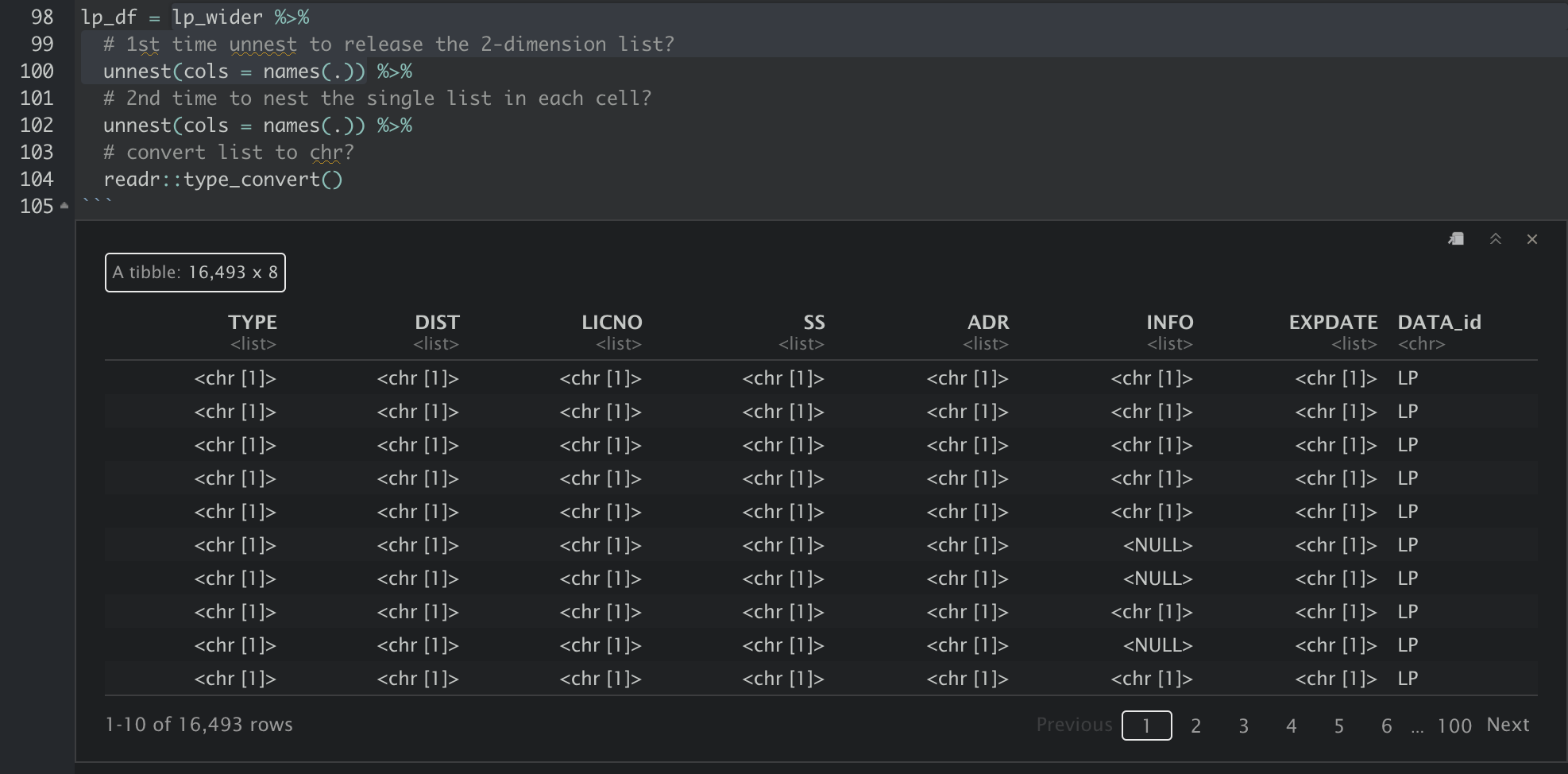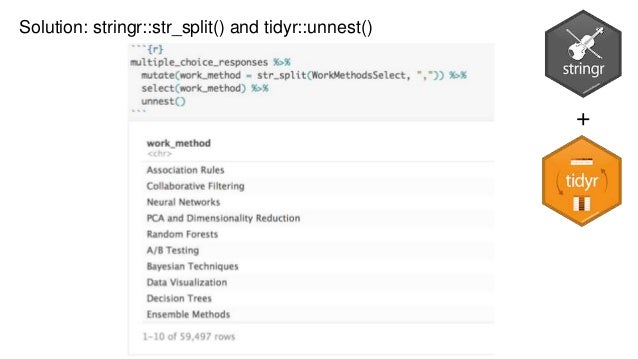Unnest R | # считаем среднюю зарплату по отделам. How to work with nested data in bigquery. The unnest function returns a result table that includes a row for each element of the specified array. And if unnest appears as part of an existing list inside table(), it's expanded to multiple entries there too. Ncmeta::nc_grids(oisstfile) %>% tidyr::unnest(cols = c(variables)). Today i was struggling with a relatively simple operation: How to work with nested data in bigquery. R/unnest.r defines the following functions: Today, let's talk about one of the most important ones: And if unnest appears as part of an existing list inside table(), it's expanded to multiple entries there too. The group_by/summarize idiom in dplyr is very powerful. Unnest convert_to_dt convert_to_tible s print.unnest.spec str.unnest.spec unnest.spec is.unnest.spec. If a document or object contains a nested the from term is recursive, which enables you to chain the unnest clause with any of the terms which. This parser hackery is of course somewhat. Today, let's talk about one of the most important ones: February 18, 2015february 19, 2015giovanni marco dall'olionews8 comments. Code index add codota to your ide (free). How to work with nested data in bigquery. The unnest clause is used within the from clause. When you have a data.frame where one or multiple columns are lists. Today i was struggling with a relatively simple operation: In unnest(), the new inner names will have the outer names (+ names_sep) automatically stripped. 1,704 x 9 #> # groups: R/unnest.r defines the following functions: The most useful r function of the week: The opposite of nest() is unnest(). The unnest clause is used within the from clause. What it's supposed to do is pretty simple. This parser hackery is of course somewhat. And if unnest appears as part of an existing list inside table(), it's expanded to multiple entries there too. R/unnest.r defines the following functions: If a document or object contains a nested the from term is recursive, which enables you to chain the unnest clause with any of the terms which. Unnest() from the tidyr package. We use a common example we will show how to work with the data and explore useful bigquery functions, including unnest. When you have a data.frame where one or multiple columns are lists. Usage unnest(data,.,.drop = na,.id = null,.sep = null,.preserve = null). Unnest convert_to_dt convert_to_tible s print.unnest.spec str.unnest.spec unnest.spec is.unnest.spec. Code index add codota to your ide (free). What it's supposed to do is pretty simple. How to work with nested data in bigquery. To do this, we use tidytext's unnest_tokens. The unnest function returns a result table that includes a row for each element of the specified array. In unnest(), the new inner names will have the outer names (+ names_sep) automatically stripped. The opposite of nest() is unnest(). What it's supposed to do is pretty simple. Ncmeta::nc_grids(oisstfile) %>% tidyr::unnest(cols = c(variables)). This makes names_sep roughly symmetric between nesting and unnesting. How to work with nested data in bigquery. Using the unnest function to analyze event parameters and user properties that you receive along with your analytics data. The group_by/summarize idiom in dplyr is very powerful. Unnest() from the tidyr package. Usage unnest(data,.,.drop = na,.id = null,.sep = null,.preserve = null). The unnest clause is used within the from clause. 1,704 x 9 #> # groups: The unnest function returns a result table that includes a row for each element of the specified array. We use a common example we will show how to work with the data and explore useful bigquery functions, including unnest. What it's supposed to do is pretty simple. Country, continent 142 we can use mutate() and unnest() to create a data frame with a row for each country If there are multiple ordinary array arguments specified.


This parser hackery is of course somewhat unnest. Country, continent 142 we can use mutate() and unnest() to create a data frame with a row for each country
Unnest R: How to work with nested data in bigquery.

0 comments:
Post a Comment